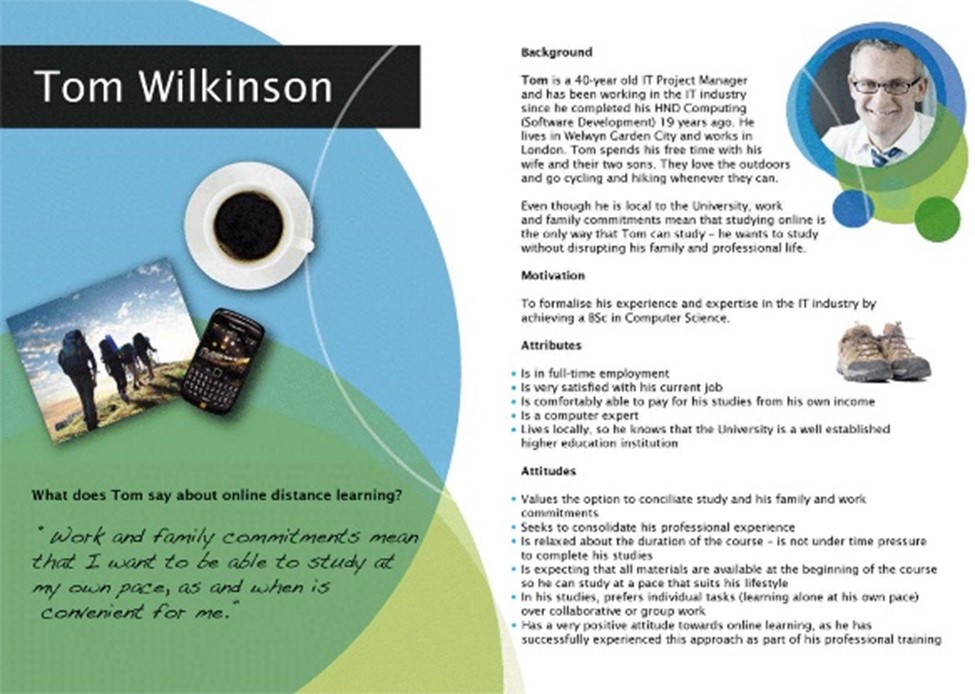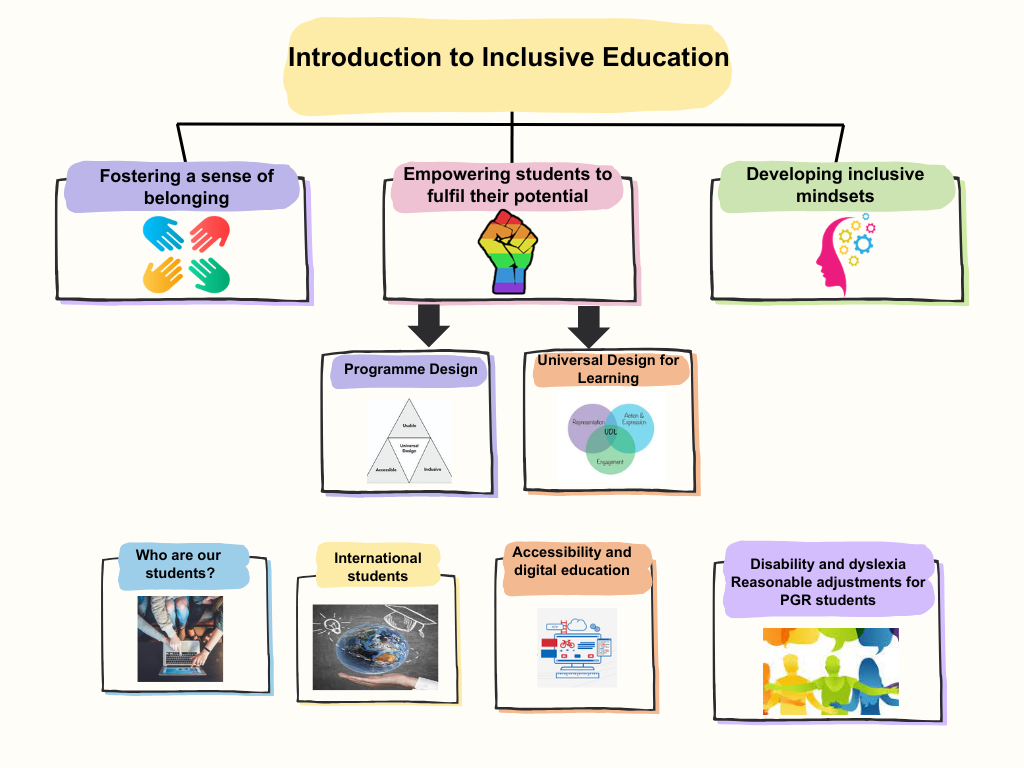Who are our students?
The importance of knowing who your students are and their experience and outcomes
The changing landscape of Higher Education has made it more significant than ever to reflect on our practice in order to meet the needs of the diverse student population (Mathesion 2015). Knowledge of the diverse, intersectional identities of our students is fundamental to how we design, teach and assess our curriculum. When acknowledging and understanding the diversity of our students and anticipating the barriers that students may face whilst at university, we ensure we are providing learning opportunities that are authentic, relevant, and meaningful for all .
A theme that has underpinned research is the importance of understanding the diverse characteristics of your student body by engaging with relevant and up to date data in order to address the educational disparities that exist within the higher education sector.
Applying evidence informed approach based on the diverse characteristics of our students ensures we are driven by accurate data rather than outdated assumptions we may have of our students, their backgrounds, cultures and experiences. When we place the students at the centre of the learning, we create a curriculum that represents, responds to and reflects the diversity of all of our students, not just certain groups or characteristics.
In addition to understanding and responding to who our students are, it is important for us to also understand the experiences and outcomes of our diverse student body so that we can take action to address disparities that exist. For example, a lot of attention within the sector has focused on ethnicity awarding gaps, as there are persistent disparities in the proportion of ethnic minority students being awarded first or 2:1 degrees compared to white students, and understanding the evidence and analysing the data is a key recommendation in terms of closing these gaps (UUK, 2019, 20212) .
We have therefore been working to enhance our data reporting, to help us better understand our students and inform our practice.
To find out how to access and navigate our data at Cardiff University click here (staff only).
Using personas to develop your understanding of students

Figure 3: A sample persona (Lilley, Piper ac Attwood 2015)
Personas are archetypes that characterise the needs, goals, technical experience, accessibility requirements and other personal characteristics of larger groups of people (Lilley, Piper and Attwood 2015). Although previously often used as part of information systems and learning technology development, the creation of rich, inspiring student profiles or personas, by teaching staff can provide colleagues with an enhanced understanding of the student population, and identify key characteristics to be taken into account during the student lifecyccle and the teaching cycle of design, delivery, assessment and evaluation.
To find out more about Personas, access this Xerte learning resource:
Where next?
Workshops
You can also develop your understanding of Inclusive Education by attending workshop sessions that relate to each topic. These workshops can be taken in a live face-to-face session, if you prefer social interactive learning, or can be completed asynchronously in your own time, if preferred. You can find out more information on workshops, and the link to book is here.
Bespoke School Provision
We offer support for Schools on Inclusive Education, through the Education Development service. This can be useful to address specific local concerns, to upskill whole teams, or to support the programme approval and revalidation process. Please contact your School’s Education Development Team contact for more information.
Map of Topics
Below is a map of the toolkit and workshop topics, to aid your navigation. These will be developed and added to in future iterations of this toolkit.

You’re on page 2 of 8 Inclusivity theme pages. Explore the others here:
1.Inclusivity and the CU Inclusive Education Framework
3.Fostering a sense of belonging for all students
4.Empowering students to fulfil their potential
5.Developing Inclusive Mindsets
6.Universal Design for Learning
8.Disability and Reasonable adjustments
Or how about another theme?
References
References
Hinchcliffe, T. 2021 The Hidden curriculum of Higher Education [Online]. Available at : https://www.advance-he.ac.uk/knowledge-hub/hidden-curriculum-higher-education [Accessed 30/8/22]
Hockings, C. 2010. Inclusive Learning and Teaching in Higher Education: A Synthesis of Research. York: Higher Education Academy. Available Online
Lawrie, G., Marquis, E., Fuller, E., Newman, T., Qui, M., Nomikoudis, M., Roelofs, F., & van Dam, L. (2017) Moving towards inclusive learning and teaching: A synthesis of recent literature. Teaching and Learning Inquiry 5 (1)
Parsons, L and Ozaki, C.C. 2020. Teaching and Learning for Social Justice and Equity in Higher Education.Switzerland: Springer Available online [link: https://librarysearch.cardiff.ac.uk/permalink/44WHELF_CAR/b7291a/cdi_askewsholts_vlebooks_9783030449391 ]
Robertson, Susan. (2010). Globalising UK Higher Education. Globalisation, Societies and Education. 8. 191-203. 10.1080/14767721003776320.
TES 2013 Now we are 50. Online: https://www.timeshighereducation.com/features/participation-rates-now-we-are-50/2005873.article
Thomas, L. and May, H. 2010. Inclusive Learning and teaching in Higher education. York: HEA. Available online
Share your feedback